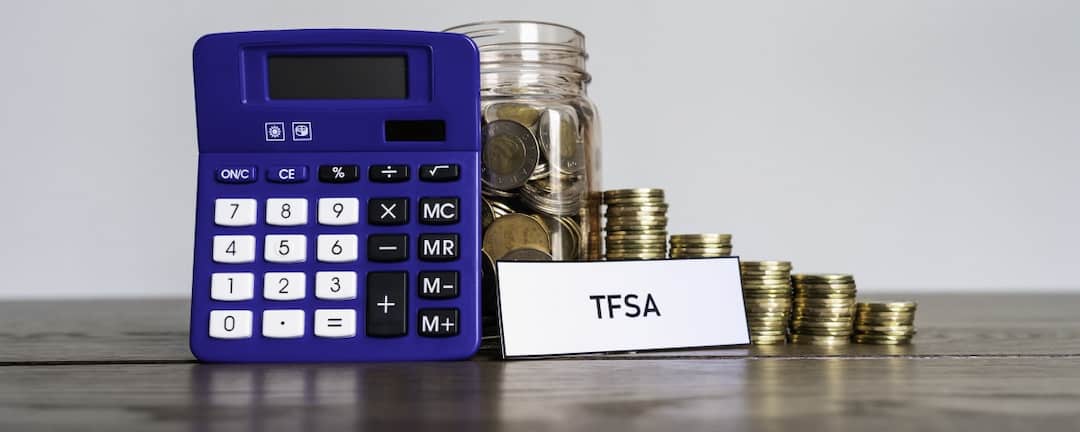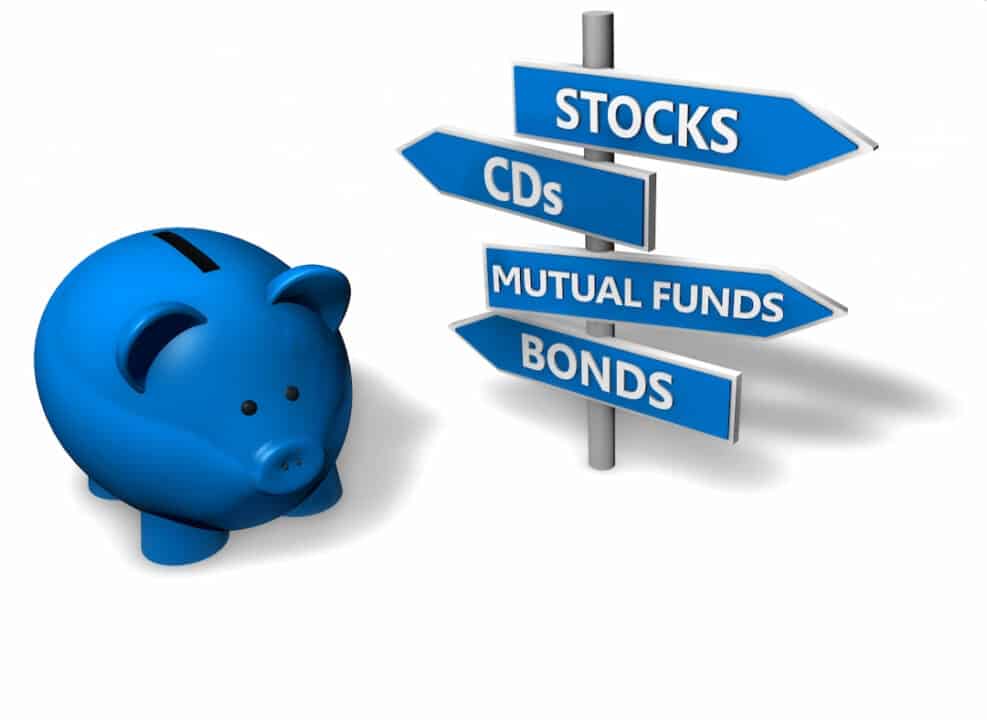Saving and investing money can be a daunting task, but with a thorough breakdown of a GIC vs TFSA, it does not have to be. Whether you want to save to meet short-term or long-term goals, there are many savings options. Before deciding which saving option is better for you, it is important to consider your own financial needs.
Savings options, interest rates and low fees help to grow your funds over time. Some popular savings options include GICs and TFSAs. Regular savings account options are usually taxed, making tax-free savings a better option for most financial goals. You want to invest your money to help make the growth of your funds. But, with all the different investment options out there it can be difficult to choose the right one for you.

What are GICs and How do They Work?
The first tax-free savings account option is a GIC. GIC stands for Guaranteed Interest Certificate. Essentially, a GIC is an investment option that helps Canadians save and earn interest. With a typical GIC, you invest your funds with a financial institution and it will be a guaranteed investment. Meaning, you will get your money back, along with interest.
A GIC interest rate is typically determined by the amount of time you deposit your funds for. People refer to this as the term. GICs can range anywhere from less than a year to over 5 years. A 1-year investment will give you less interest than let’s say, a 5-year investment. This means that even though a GIC is a guaranteed investment, there are ways to increase the interest you earn.
What is a Tax-Free Savings Account GIC?
With a normal GIC, you have to claim the interest paid as earnings. This means that the interest you earn from the GIC is applicable to personal income taxes. A tax-free GIC, like the one we are exploring today, does not need claiming. Essentially it is a tax-free savings account where you can earn interest.

What Types of TFSA GICs Exist?
There are two main types of TFSA GICs that most banks or financial institutions in Canada will offer. These include redeemable and non-redeemable GICs.
Redeemable TFSA GICs
Redeemable GICs are also known as cashable GICs. In this type of GIC, you can cash out your money before the end of the term without having to pay a fee. This type of GIC is much more flexible, and most similar to a regular savings account.
You can easily cash out your money in case of an emergency or make another investment. However, this flexibility and access to your money often lower the interest rate. For those that do not want to risk not having access whenever you need it, this is a great option. Most banks still offer competitive interest rates.
Non-Redeemable TFSA GICs
Non-redeemable TFSA GICs lock in your money until the end of the term. This means that even the principal funds you deposit into the account are not available during the term. Non-redeemable TFSA GICs usually come with a higher interest rate. This means you can grow your principal amount just by having your money sit there (tax-free).
This type of investment is great for those than know they won’t need to touch their money for a certain period of time. It is less flexible, and in case you do need funds for an emergency, there will likely be a penalty fee to cash out your money. For those saving up for something specific, a non-redeemable TFSA GIC is a great long-term investment.
What is a TFSA?

TFSA stands for tax-free savings account – see TFSA investments to opt for. It does exactly what the name suggests. It is different from a regular bank account or regular savings account because it has a much higher interest rate. Essentially you can grow your money by letting it sit there. The government in Canada started this type of investment account to help encourage people to save.
To use a TFSA, you deposit a principal amount and let the money sit there. TFSAs typically have a TFSA contribution limit determined by the government. This amount typically varies from year to year. Another benefit of these types of savings accounts is flexibility. You can withdraw money from your account at any time without a penalty fee.
The TFSA contribution room always rolls over to the next year if you cannot contribute every year. When you do withdraw money from your TFSA account, your contribution limit grows. For those looking for flexible investments with guaranteed returns, TFSAs are a great savings option.
GIC vs. TFSA: Which Investment is Better?
To help you determine which savings accounts are better for you, we first take a look at how they are different. The main difference between TFSAs and GICs is that TFSAs are less restrictive.
TFSAs allow you to invest different assets including stocks, bonds, cash, mutual funds, and GICs. A GIC only allows you to invest cash. Typically, GICs are only tax-free in registered accounts. These can be in a TFSA account, RESP (Registered Education Savings), or RRSP (Registered Retirement Savings).

To help you decide the best financial investments to fit your needs, let’s take a look at some of the most important features side by side.
Returns
Returns or interest rates can differ depending on the bank or financial institution.
TFSAs
If you are looking to invest only cash, GIC investments may give you higher returns. To make the most of your contributions in a TFSA investors suggest a variety of funds and equities. With these types of registered investments, you can get considerable returns for high or low-risk equities. You can invest anything from GICs and bonds to mutual funds and stocks.
GICs
Most GICs are only tax-free in a registered account, which means you will likely need a TFSA or similar savings account. GICs make for great guaranteed investments that can get you up to 1-3% at a fixed rate. For those looking for even higher returns, GICs also offer variable rates. These investments can bring you higher or lower rates depending on the success of the stock market.

Flexibility
TFSAs typically have greater flexibility compared to GICs due to the nature of the accounts.
TFSAs
TFSAs are more flexible in a number of different factors. First, they allow a much greater contribution room compared to a GIC. TFSA accounts also allow you to invest different types of assets from cash to high-risk equities such as stocks. These accounts are also cashable at any time without any additional payment.
The only restrictive aspect of TFSAs is that the government in Canada restricts the yearly contribution. It is important to determine the maximum contributions allowed first. Over-contributing leads to extra fees.
GICs
The flexibility of GICs depends on what type of GIC account you are investing in. Overall, there is a more restrictive contribution room since you can only invest cash. A non-redeemable GIC does not allow you to touch your contributions until after maturity. If you do choose to withdraw before maturity, you may have to pay a penalty fee.
Redeemable GICs are more flexible in terms of withdrawing before maturity. However, it is at the sacrifice of a lower interest rate.

How Much do I Have to Invest?
Typically if you contribute more funds, the returns will be higher. Let’s take a look at how much you have to invest in GICs and TFSAs.
TFSAs– There is no minimum amount to invest in a TFSA. However, there is a maximum limit that the Canadian government determines every year. In 2021, the maximum limit is $6,000. If you are 18 years old or older and have never contributed, the maximum principal you can contribute is $75,500. With TFSAs there is no need to worry about fixed contributions or a minimum contribution per year.
GICs– GICs usually have a minimum investment amount of around $500. However, this amount can differ depending on the bank. It is also important to note that most GICs have a fixed rate, which means that the more you invest, the higher the return.
Can You Lose Money in a GIC?
When investing in a GIC, there is no way you can lose money. A GIC is an investment with little to no risk. It has a guaranteed interest rate that is usually fixed. The only thing you may have to worry about is if you need to access your funds before the maturity date.

This post is sponsored by Zintego
The Bottom Line
GICs and TFSAs are both great savings options that are available in Canada. The two have slightly different features to offer, which means there may be one more suitable to your financial needs. Whether you are looking for better flexibility or higher returns, these high-interest savings accounts can help grow your money tax-free.